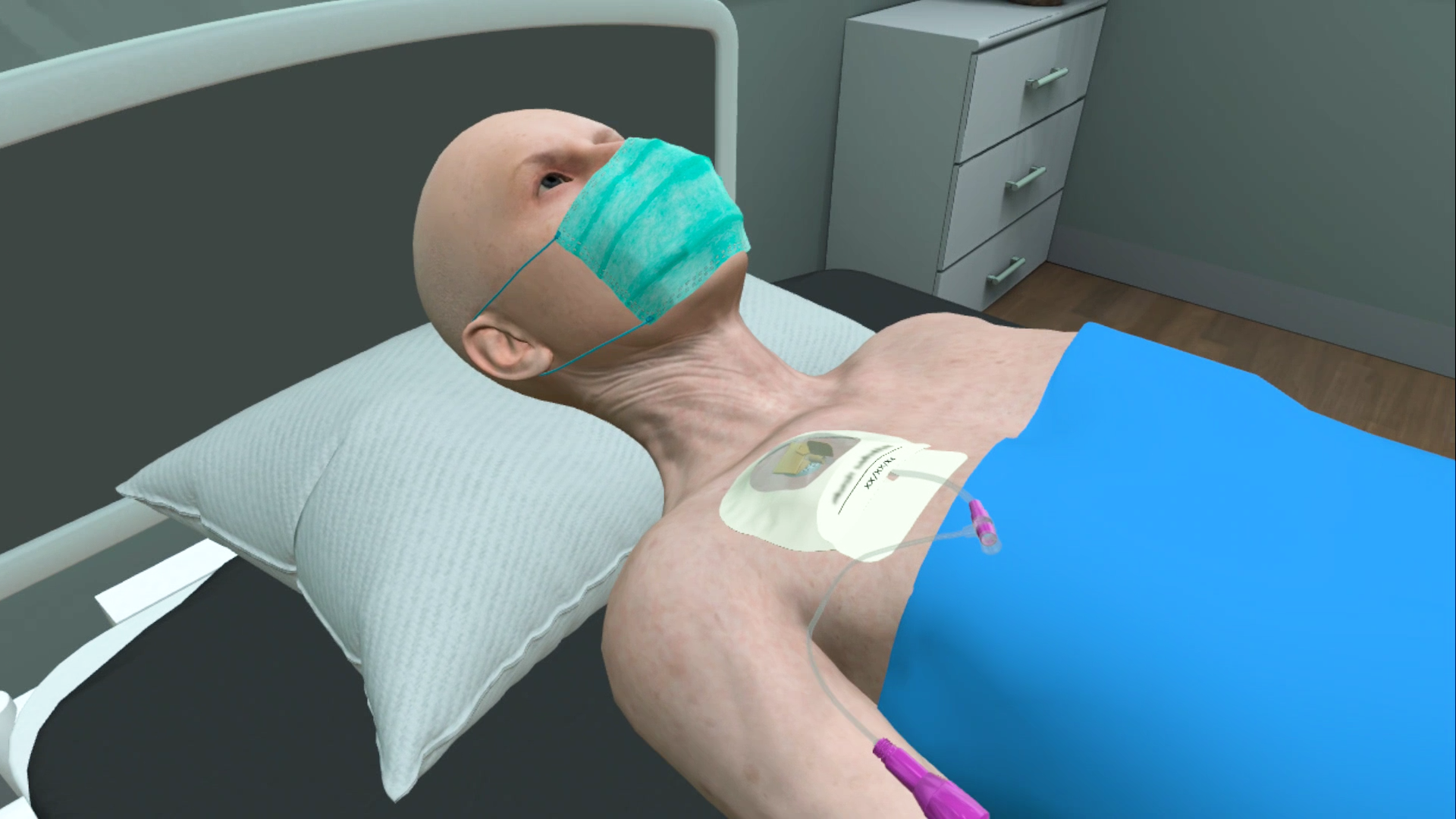Implanted Port Access
An implanted port access is a procedure in which the healthcare provider accesses an implanted device to administer IV fluids or medication, in this case chemotherapy. The patient here is 60-year-old Karen Thompson who is on a chemo cycle. The port is a small round metallic device containing a silicon top with thin hollow tube inserted into the large vein enabling the medication to travel from the port directly into the bloodstream.
This VR simulation for Implanted Port Access is designed to help healthcare providers practice the procedure with a virtual patient in a safe and controlled environment. With both training and assessment modes, learners can perform the procedure and assess themselves on their performance.
- Obtaining patient consent and ensuring their safety and comfort throughout the procedure
- Demonstrating proper aseptic technique and maintain a sterile field during port access
- Accurately accessing the port and flushing it with saline to ensure patency
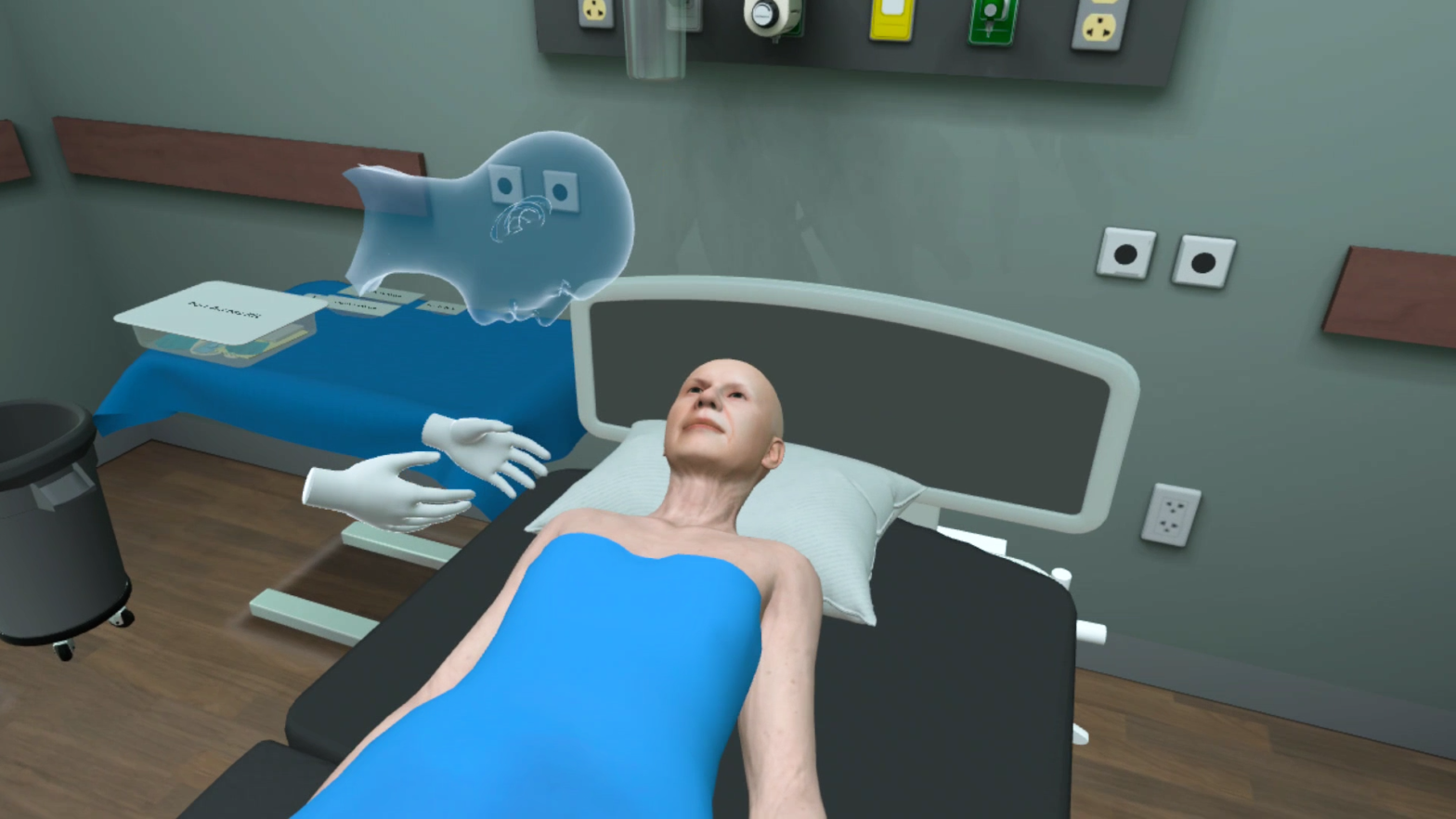
- National Institutes of Health (NIH). (2023). Central venous catheters and implanted ports: Best practices for port access.
- Oncology Nursing Society (ONS). (2023). Guidelines for accessing and maintaining implanted ports.
Customize Your Program
Get rid of the editor. Adopt in-VR customization.
MedVR Education is bringing to you in-VR customization that will enable you to customize your procedural simulations by making selections from a range of feature choices.
- Select patient from a diverse background
- Choose preferred virtual environment
- Select equipment used in the procedure
- Modify difficulty level of the assessment mode
- …..many more to come
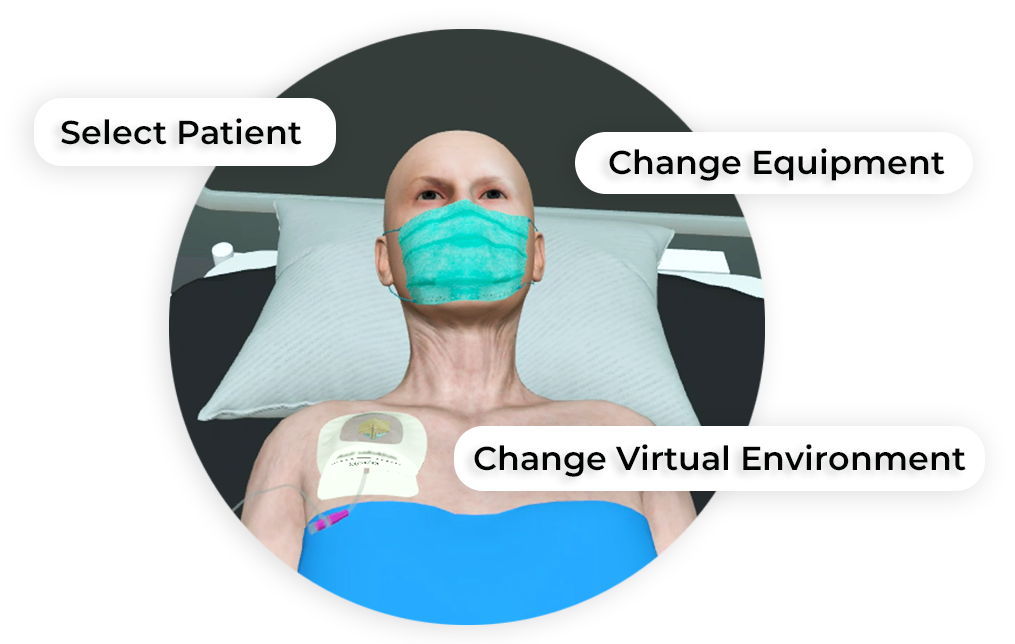
 Multi-playerSessions
Multi-playerSessions Physics-based Interactions
Physics-based Interactions
Core Skills Training
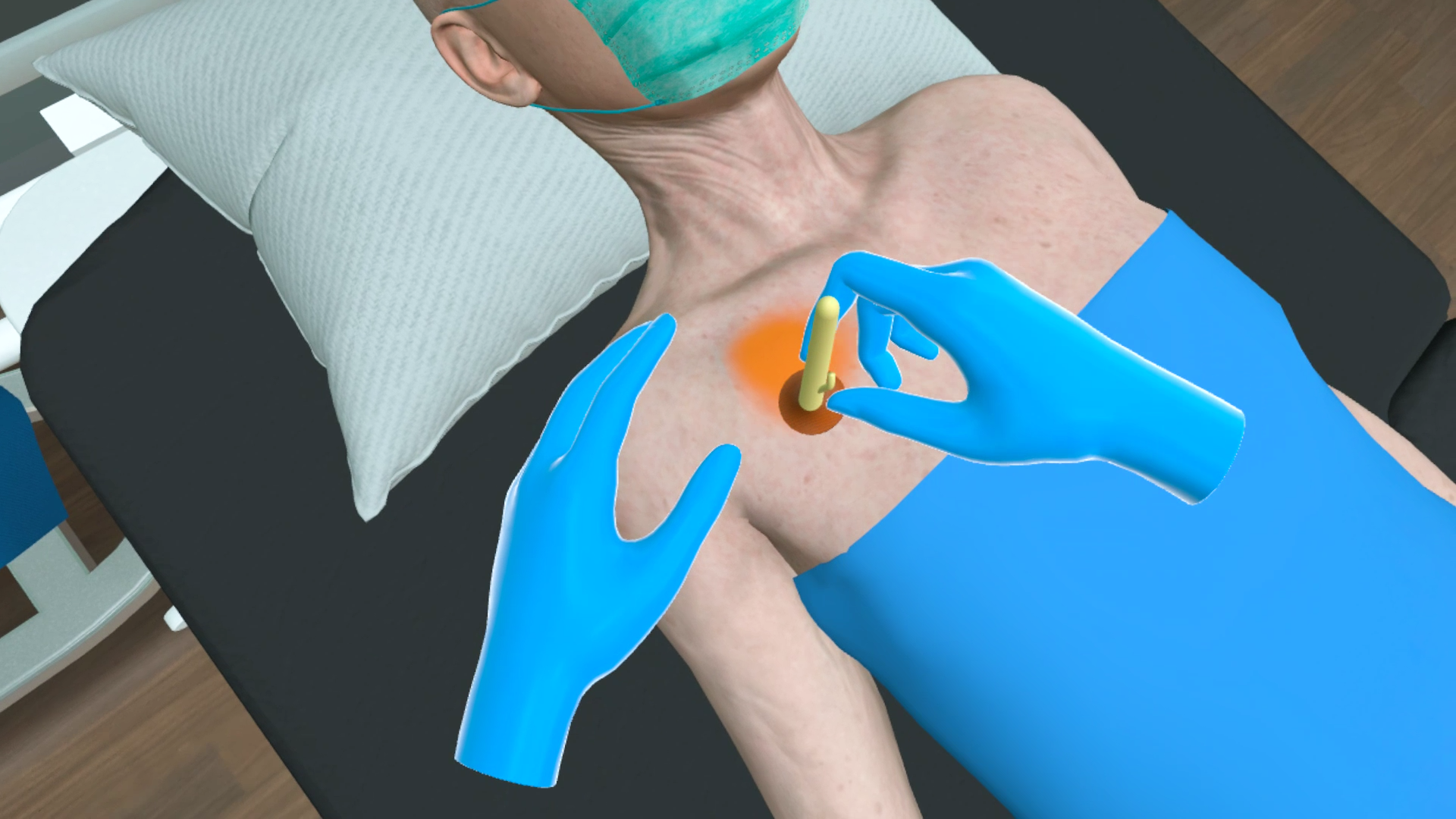
Performing Implanted Port Access
As a part of this Implanted Port Access, the learner will begin the procedure by performing hand hygiene and creating a sterile field. After preparing the Huber needle and cleansing the port using Chloroprep, the learner will go on to drape the port site, stabilize the port and insert the needle perpendicularly into the port. The drape will be removed after applying a microbial patch. To complete the procedure, the line will be flushed to remove blood, and the tubing clamp closed. All necessary affordances are provided to complete the procedure with efficiency.
Training
With prompts, guidance and affordances learners are hand-held through the process to practice the procedure in a virtual environment with a virtual patient.
- Photorealistic virtual environment
- Physics-based interactions
- Detailed instructions
- Adequate affordances to assist in task completion
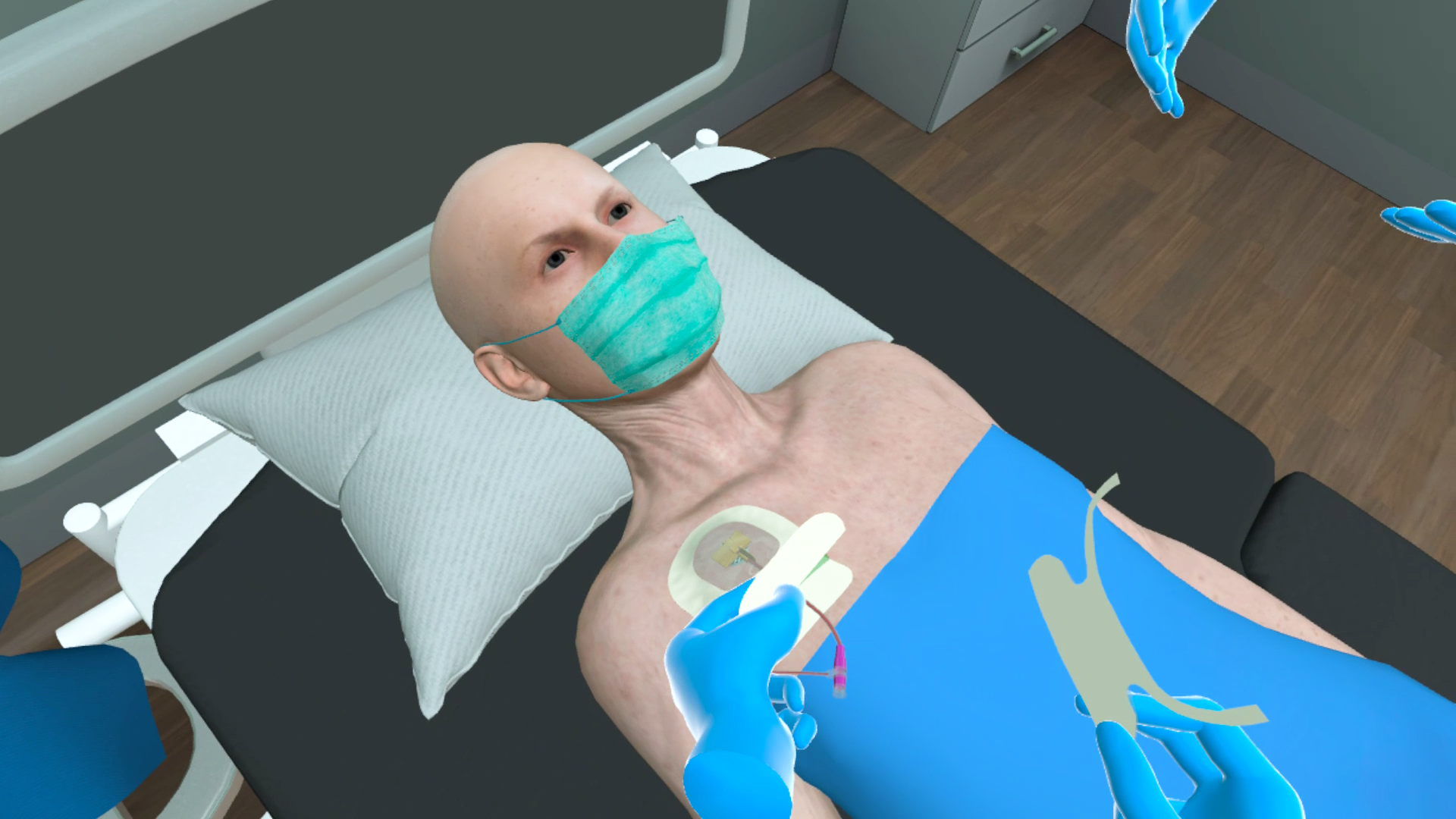
Assessment
Test acquired skills to perform the procedures from start to finish without prompts. An incorrect step will take the learner back to the start to start afresh.
- Live scoring
- Instant feedback
- Adequate affordances for efficient performance
- Time tracking to monitor activity completion
